Abstract
Unless special measures are taken, community water supplies are likely to contain enteric viruses which may lead to sporadic cases, or even epidemics, of such diseases as infectious hepatitis or poliomyelitis. After a general discussion of waterborne viral infections, in which it is pointed out that subclinical infections may considerably outnumber clinical cases, the author proposes a method for the concentration and detection of enteric viruses in water by means of membrane filtration and growth on monkey-kidney-cell or other tissue cultures.
The various methods of disinfection of water which can reduce the virus concentration to an acceptable level are discussed, and it is concluded that flocculation and filtration followed by chlorination, or ozonation followed by chlorination, are adequate methods where large volumes of water are to be treated. In developing countries where relatively small volumes of water have to be treated, iodination appears to offer certain advantages, allowing the construction of a simple water-treatment plant requiring little supervision. However, until the long-term effects of iodine, in particular on pregnant women and young children, are known iodination plants should be used only on an experimental basis.
Full text
PDF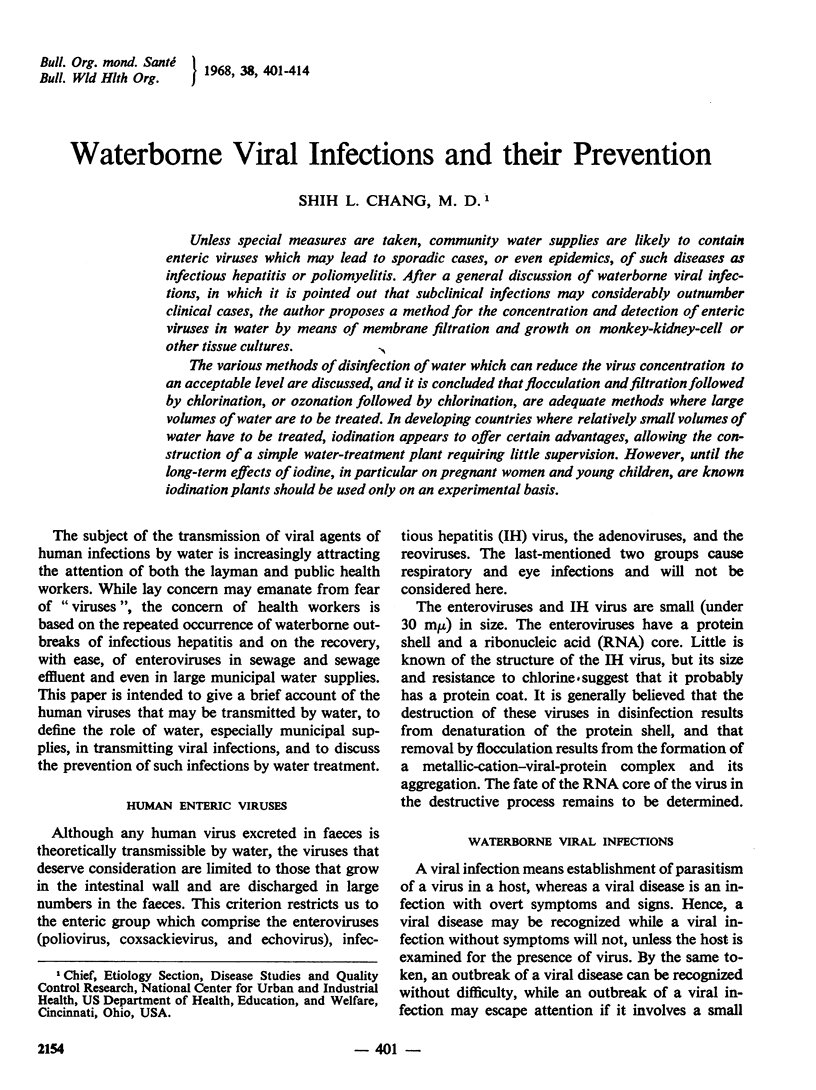
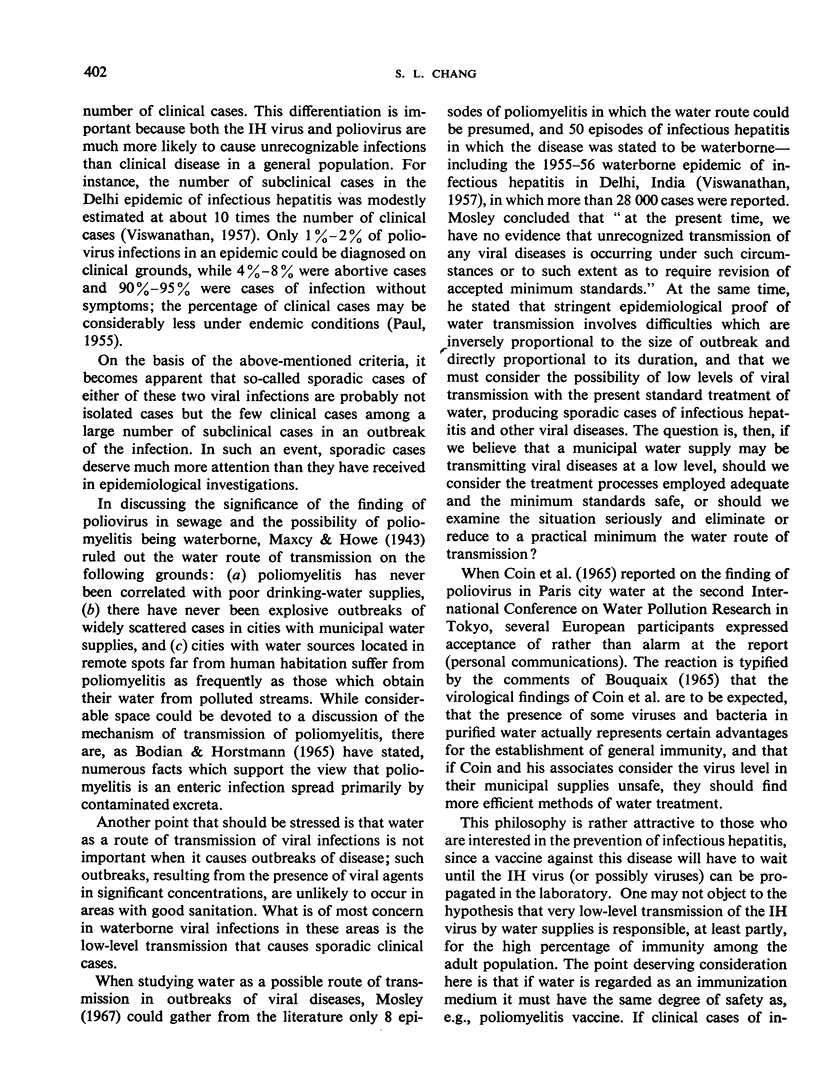
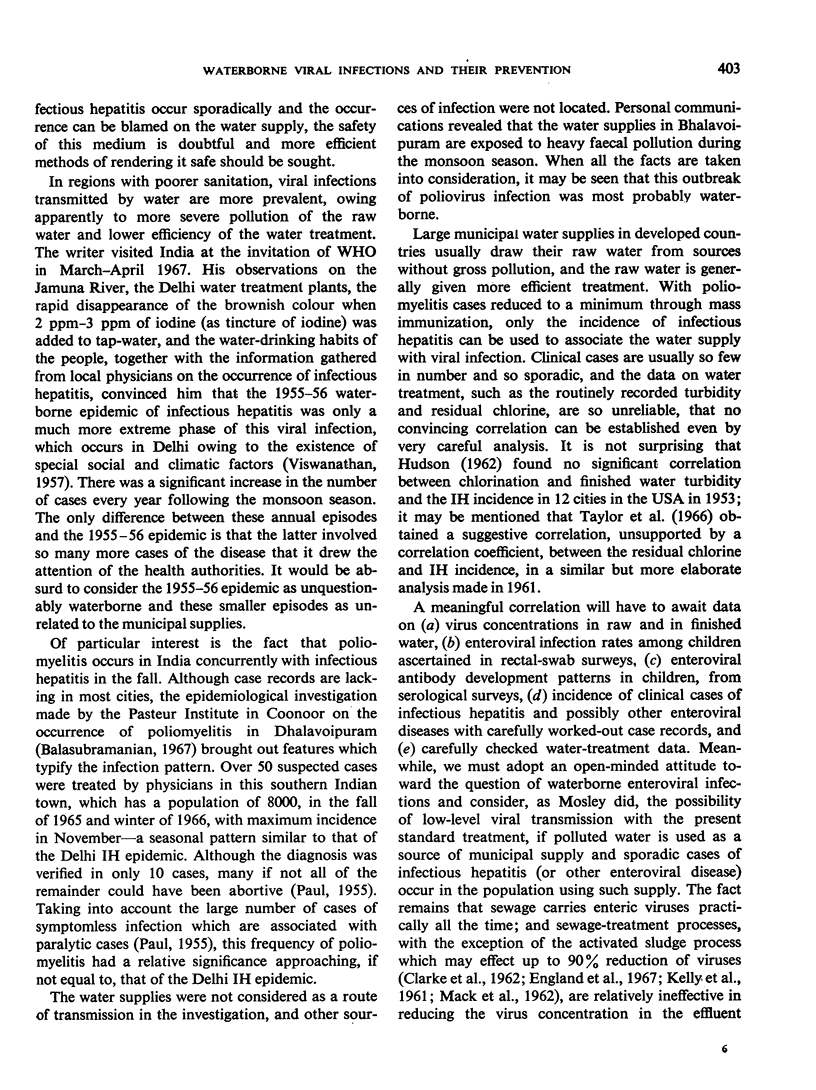
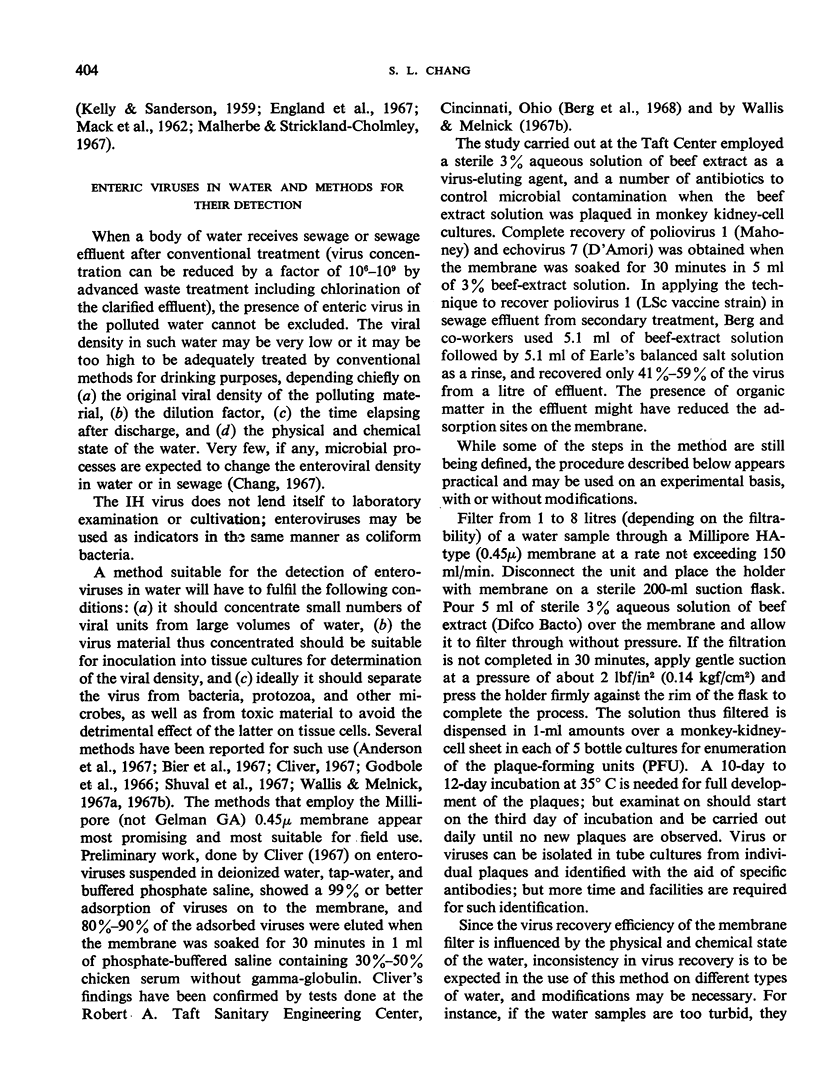
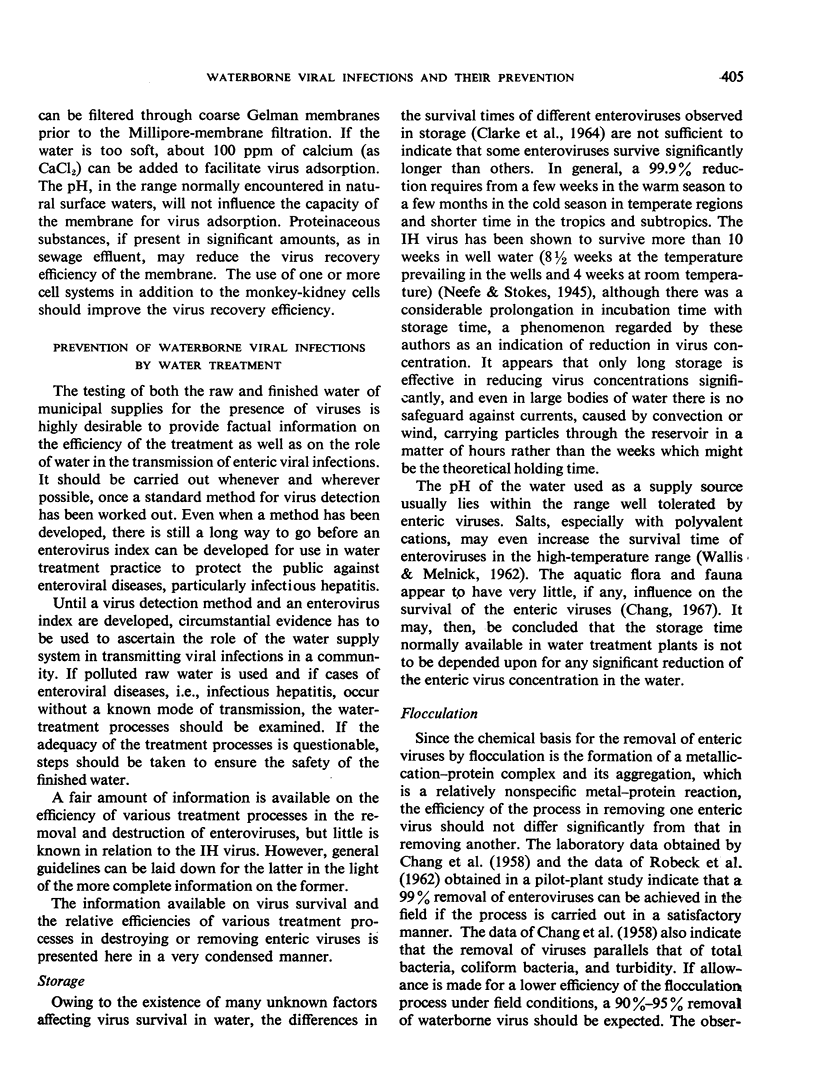
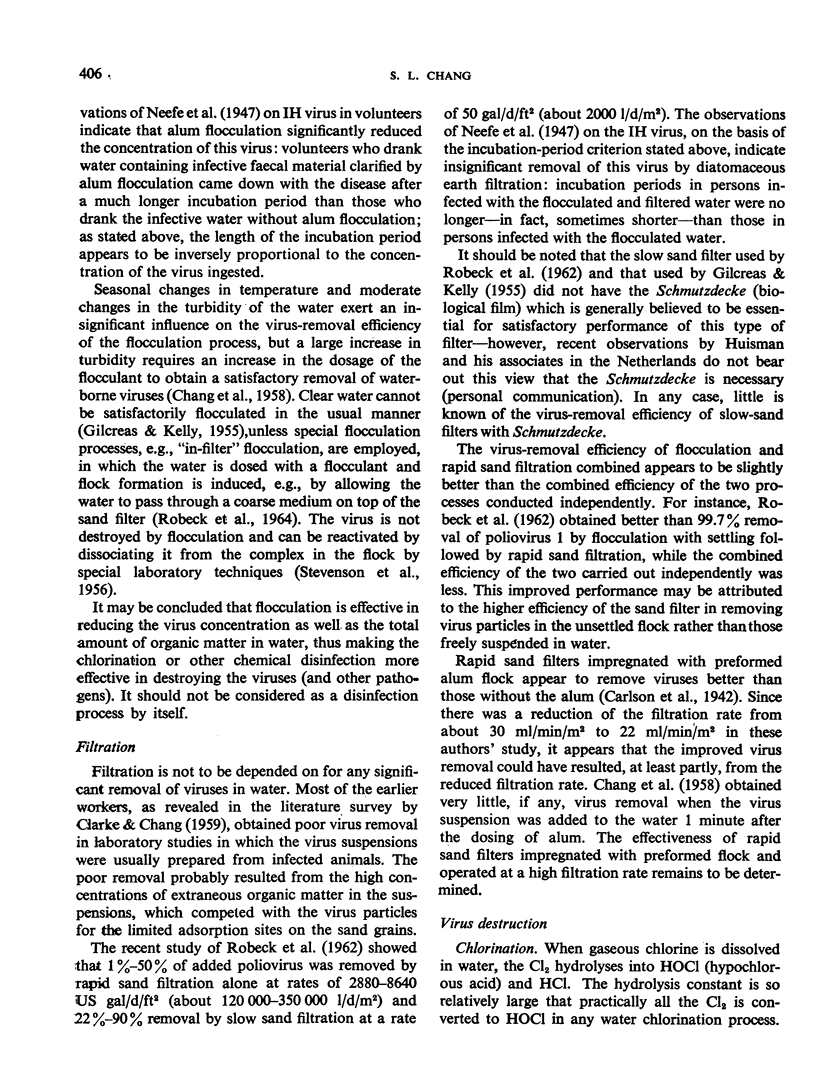
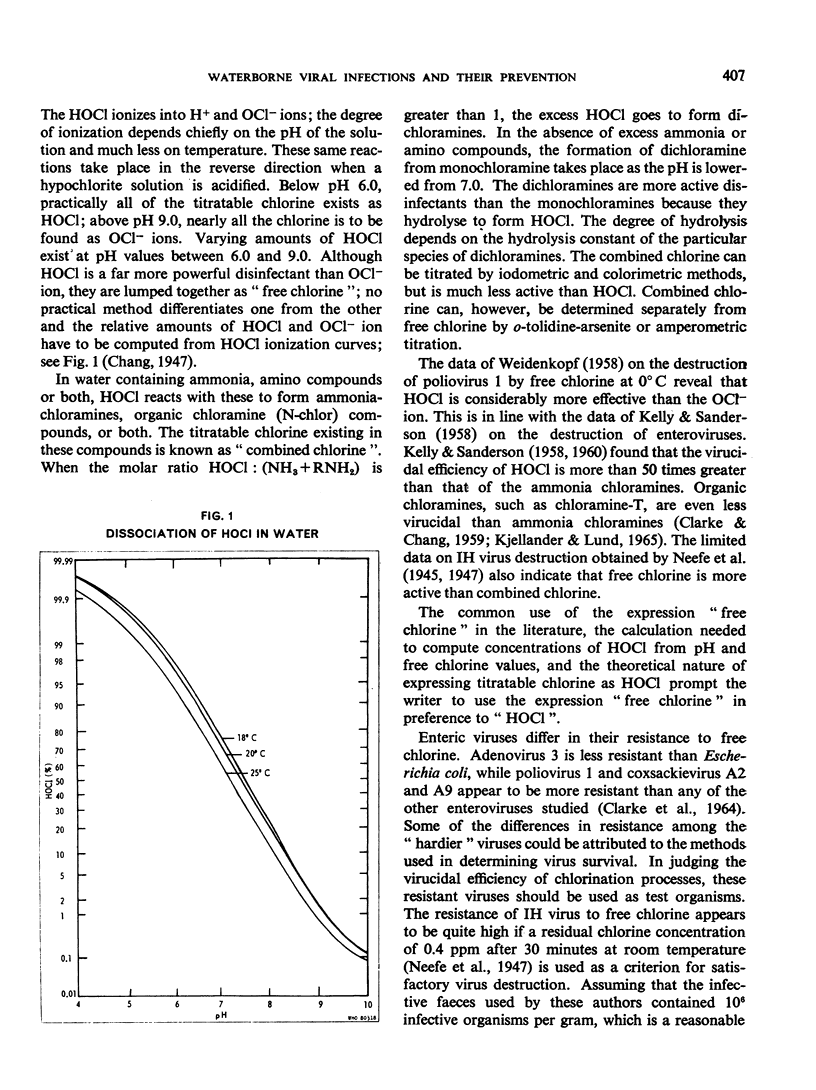
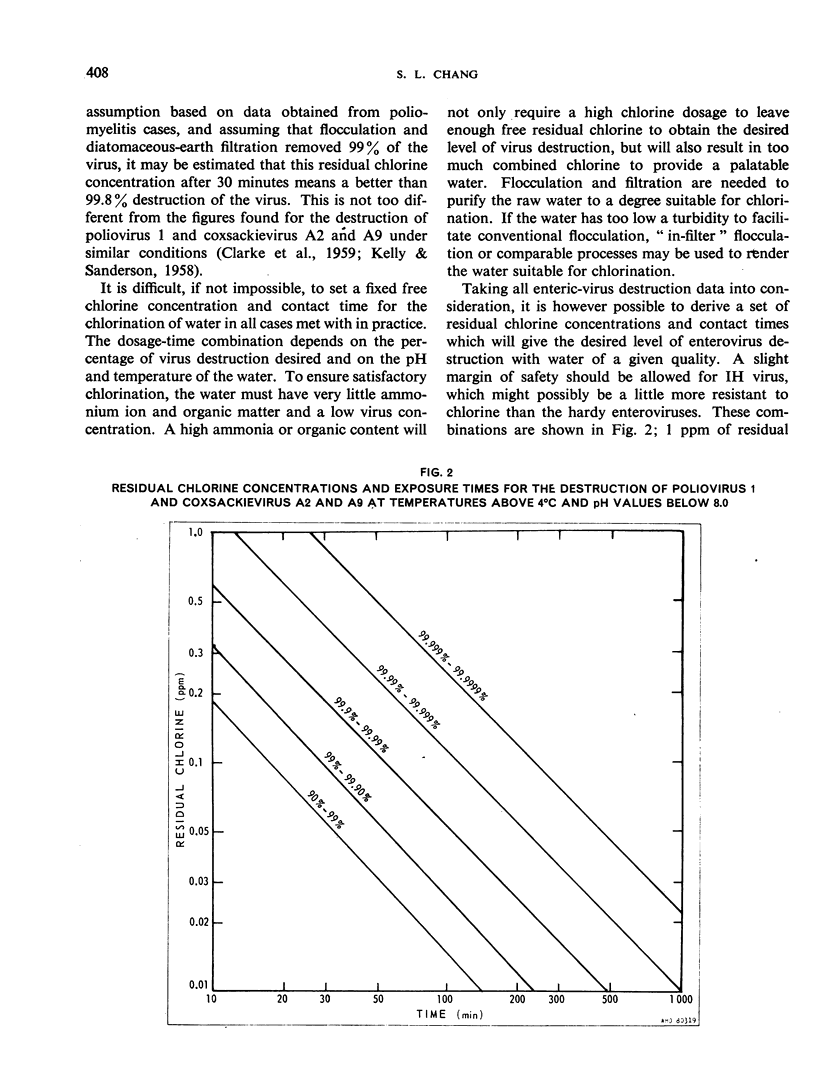
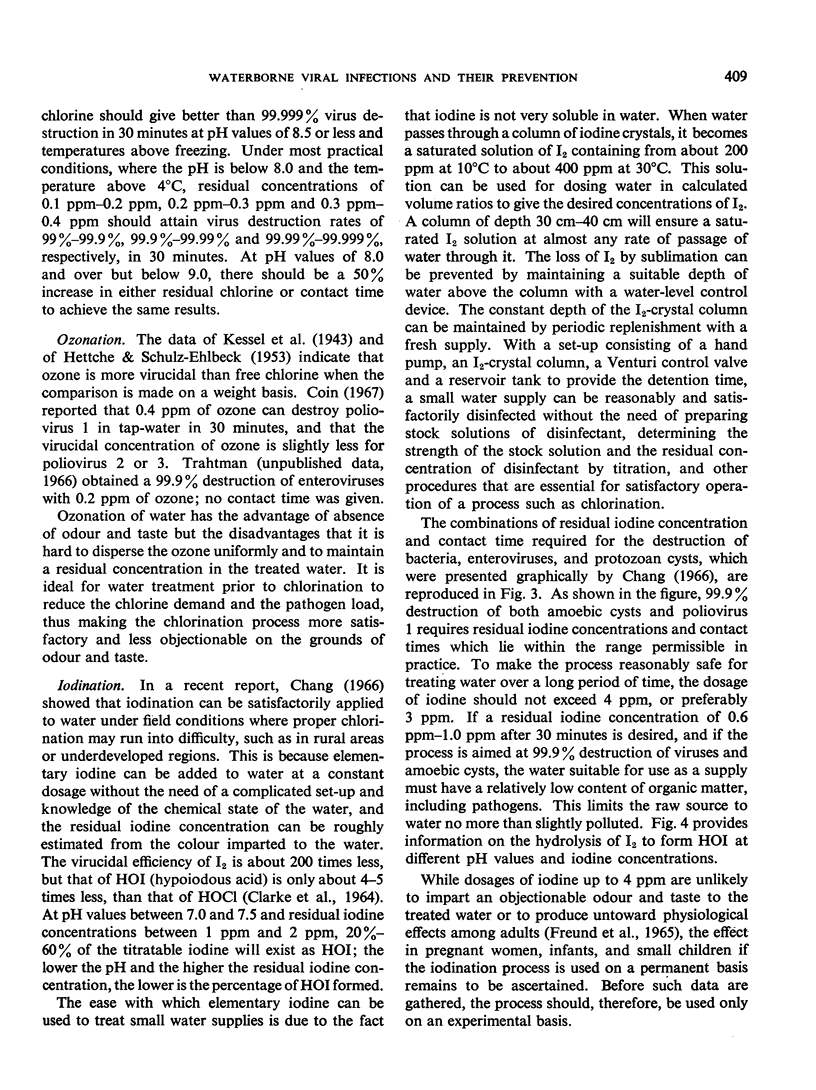
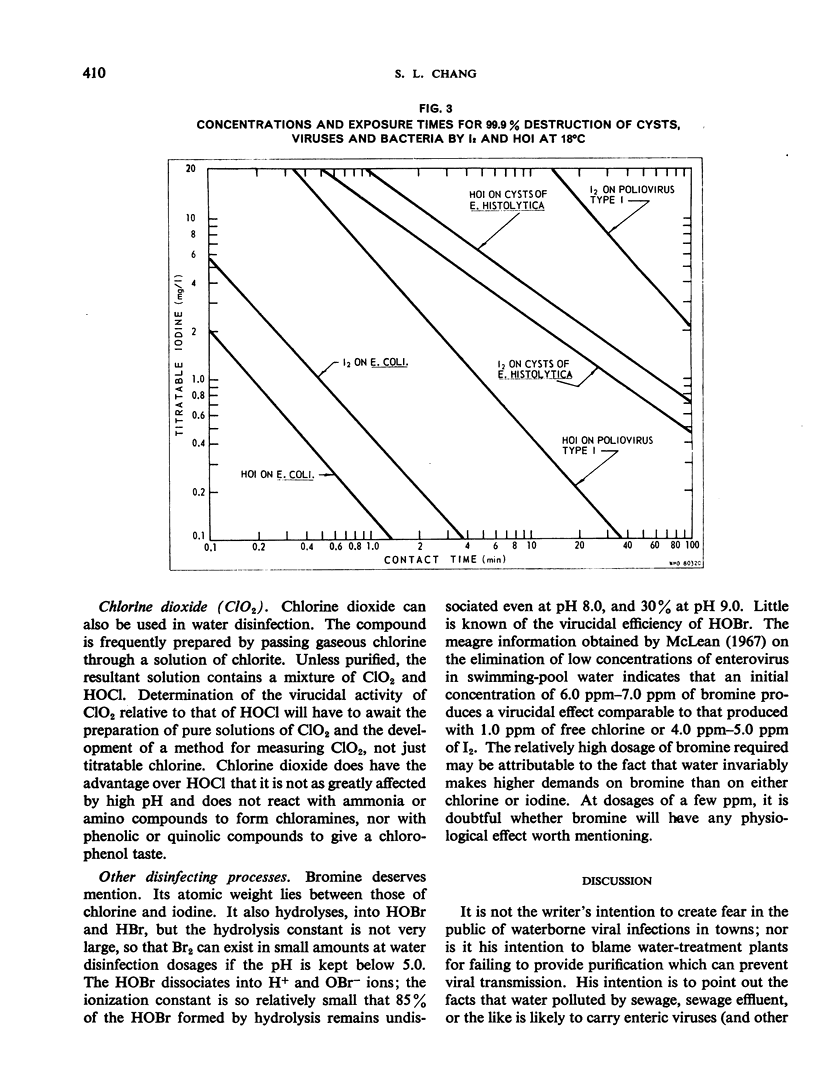
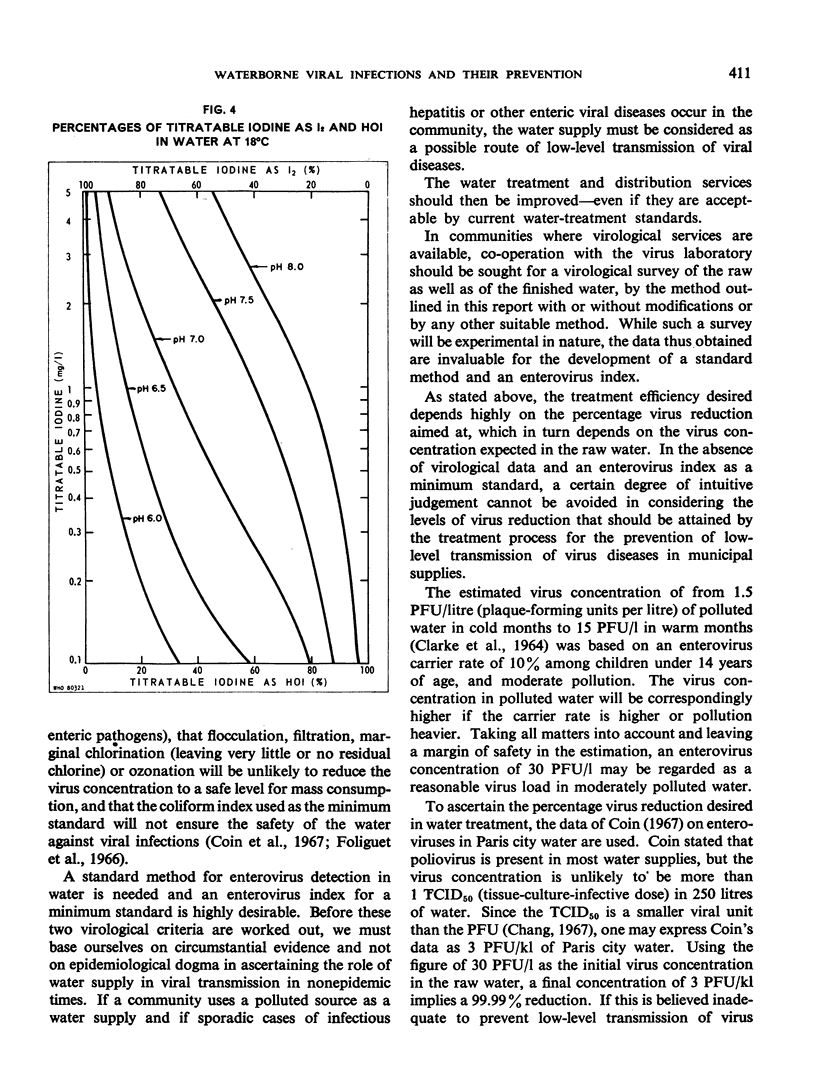
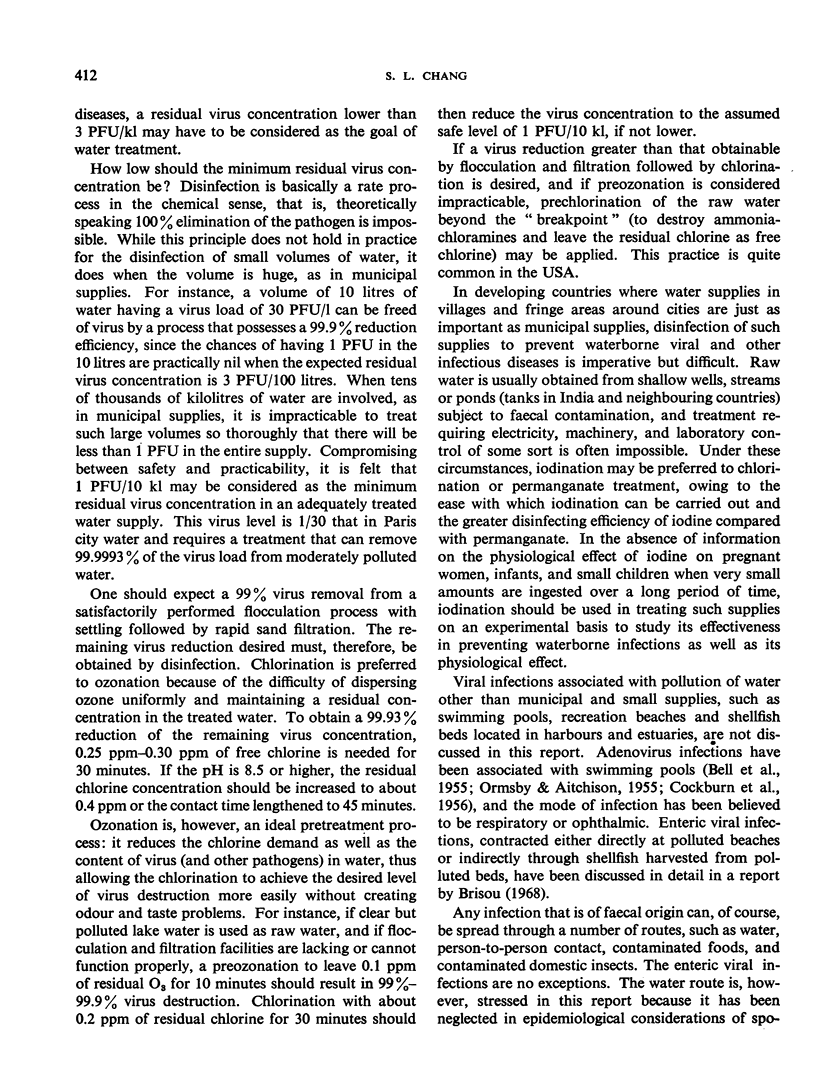
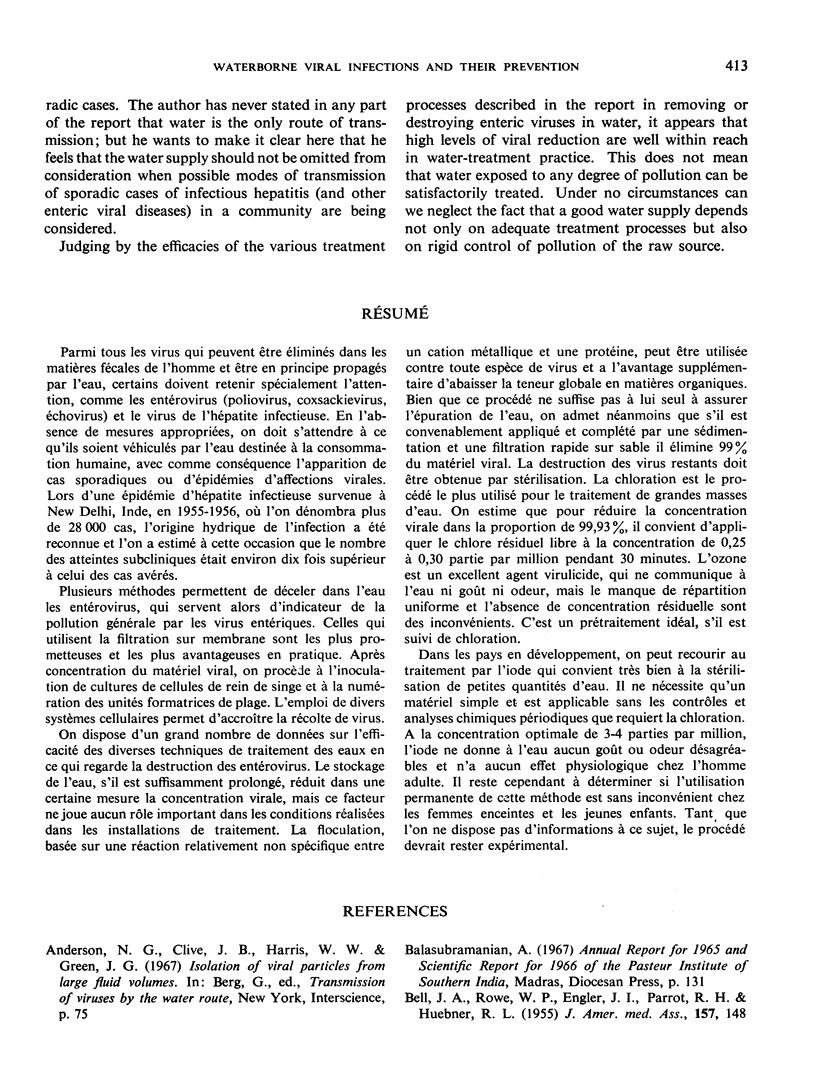
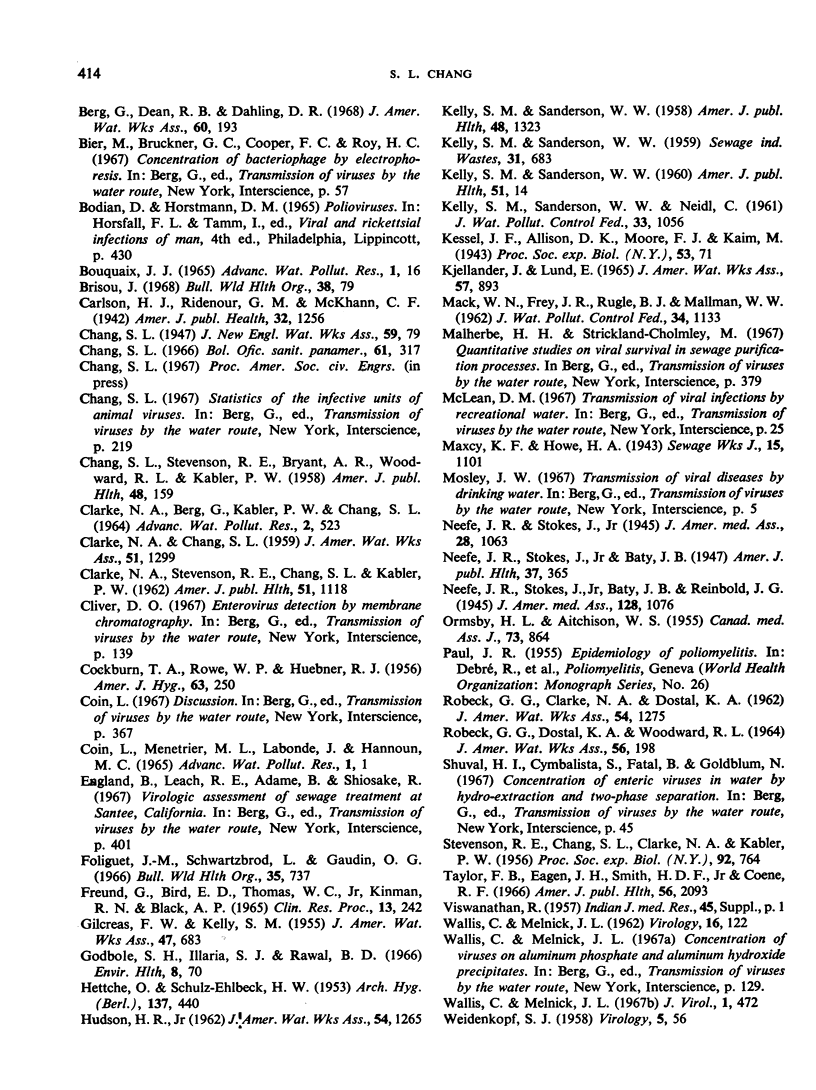
Selected References
These references are in PubMed. This may not be the complete list of references from this article.
- Brisou J. La pollution microbienne, virale et parasitaire des eaux littorales et ses conséquences pour la santé publique. Bull World Health Organ. 1968;38(1):79–118. [PMC free article] [PubMed] [Google Scholar]
- CHANG S. L., CLARKE N. A., KABLER P. W., STEVENSON R. E. Concentration of dilute virus suspensions by alum flocculation. Proc Soc Exp Biol Med. 1956 Aug-Sep;92(4):764–767. doi: 10.3181/00379727-92-22607. [DOI] [PubMed] [Google Scholar]
- CHANG S. L., STEVENSON R. E., BRYANT A. R., WOODWARD R. L., KABLER P. W. Removal of Coxsackie and bacterial viruses in water by flocculation. II. Removal of Coxsackie and bacterial viruses and the native bacteria in raw Ohio River water by flocculation with aluminum sulfate and ferric chloride. Am J Public Health Nations Health. 1958 Feb;48(2):159–169. doi: 10.2105/ajph.48.2.159. [DOI] [PMC free article] [PubMed] [Google Scholar]
- CLARKE N. A., STEVENSON R. E., CHANG S. L., KABLER P. W. Removal of enteric viruses from sewage by activated sludge treatment. Am J Public Health Nations Health. 1961 Aug;51:1118–1129. doi: 10.2105/ajph.51.8.1118. [DOI] [PMC free article] [PubMed] [Google Scholar]
- COCKBURN T. A., ROWE W. P., HUEBNER R. J. Relationship of the 1951 Greeley, Colorado, outbreak of conjunctivitis and pharyngitis to type 3 APC virus infection. Am J Hyg. 1956 May;63(3):250–253. doi: 10.1093/oxfordjournals.aje.a119808. [DOI] [PubMed] [Google Scholar]
- Carlson H. J., Ridenour G. M., McKhann C. F. Efficacy of Standard Purification Methods in Removing Poliomyelitis Virus from Water. Am J Public Health Nations Health. 1942 Nov;32(11):1256–1262. doi: 10.2105/ajph.32.11.1256. [DOI] [PMC free article] [PubMed] [Google Scholar]
- Foliguet J. M., Schwartzbrod L., Gaudin O. G. La pollution virale des eaux usées, de surface et d'alimentation. Etude effectuée dans le départment français de Meurthe-et -Moselle. Bull World Health Organ. 1966;35(5):737–749. [PMC free article] [PubMed] [Google Scholar]
- HETTCHE O., SCHULZ-EHLBECK H. W. Epidemiologie und Prophylaxe der Poliomyelitis im Hinblick auf die Rolle des Wassers bei der Ubertragung. Arch Hyg Bakteriol. 1953;137(6):440–449. [PubMed] [Google Scholar]
- KELLY S., SANDERSON W. W. The effect of chlorine in water on enteric viruses. Am J Public Health Nations Health. 1958 Oct;48(10):1323–1334. doi: 10.2105/ajph.48.10.1323. [DOI] [PMC free article] [PubMed] [Google Scholar]
- MALE HOSPITAL patients outnumber female patients. J Am Med Assoc. 1955 Jan 8;157(2):148–148. doi: 10.1001/jama.1955.02950190048017. [DOI] [PubMed] [Google Scholar]
- Neefe J. R., Baty J. B., Reinhold J. G., Stokes J. Inactivation of the Virus of Infectious Hepatitis in Drinking Water. Am J Public Health Nations Health. 1947 Apr;37(4):365–372. [PMC free article] [PubMed] [Google Scholar]
- ORMSBY H. L., AITCHISON W. S. The role of the swimming pool in the transmission of pharyngeal-conjunctival fever. Can Med Assoc J. 1955 Dec 1;73(11):864–866. [PMC free article] [PubMed] [Google Scholar]
- Taylor F. B., Eagen J. H., Smith H. F., Jr, Coene R. F. The case for water-borne infectious hepatitis. Am J Public Health Nations Health. 1966 Dec;56(12):2093–2105. doi: 10.2105/ajph.56.12.2093. [DOI] [PMC free article] [PubMed] [Google Scholar]
- WALLIS C., MELNICK J. L. Magnesium chloride enhancement of cell susceptibility to poliovirus. Virology. 1962 Feb;16:122–132. doi: 10.1016/0042-6822(62)90287-8. [DOI] [PubMed] [Google Scholar]
- WEIDENKOPF S. J. Inactivation of type 1, poliomyelitis virus with chlorine. Virology. 1958 Feb;5(1):56–67. doi: 10.1016/0042-6822(58)90005-9. [DOI] [PubMed] [Google Scholar]
- Wallis C., Melnick J. L. Concentration of enteroviruses on membrane filters. J Virol. 1967 Jun;1(3):472–477. doi: 10.1128/jvi.1.3.472-477.1967. [DOI] [PMC free article] [PubMed] [Google Scholar]


